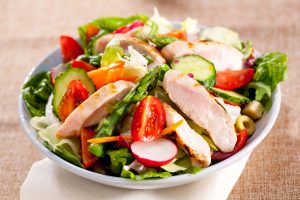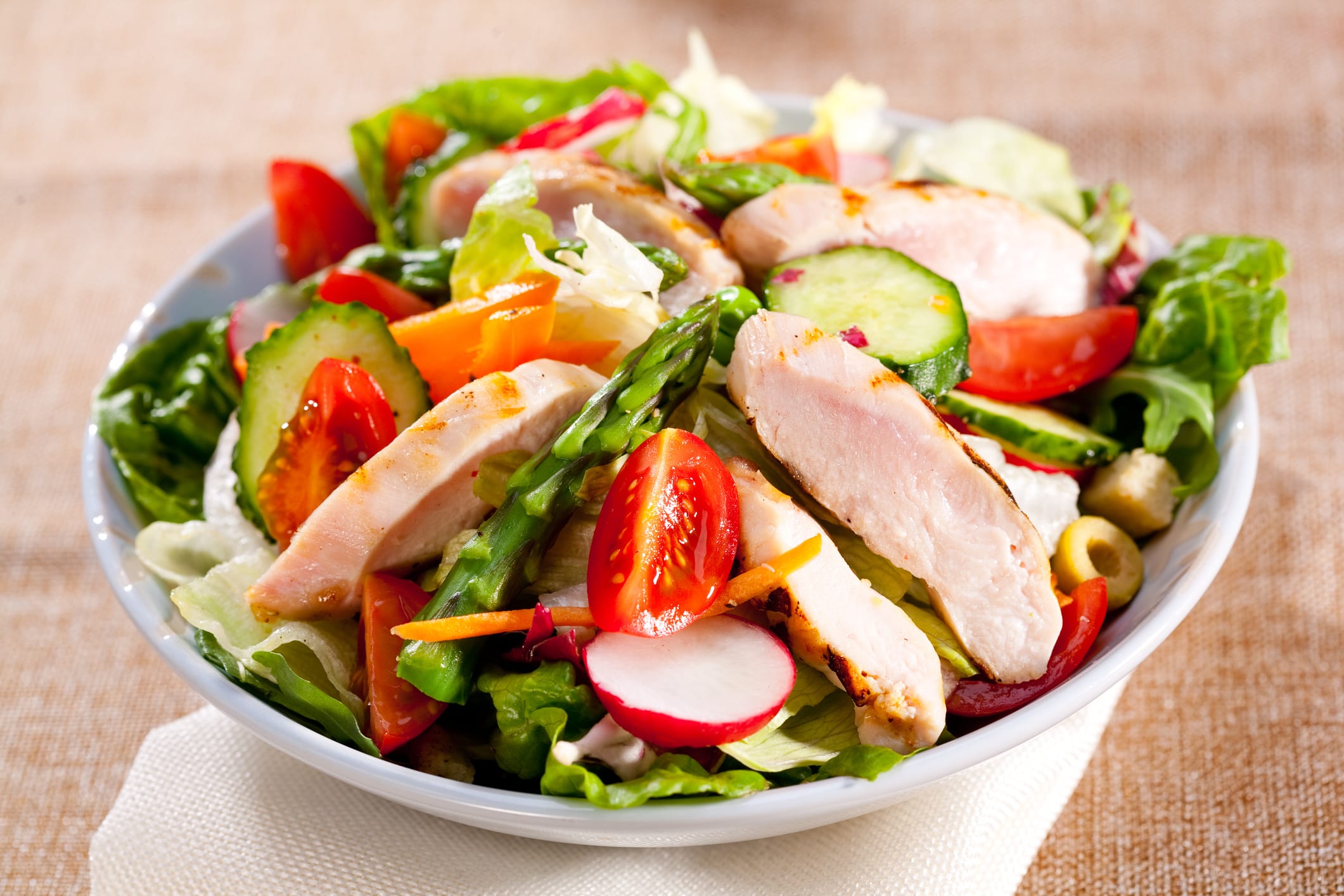Please note: Eileen Goltz is a freelance kosher food writer. The Orthodox Union makes no endorsements or representations regarding kashrut certification of various products/vendors referred to in her articles, blog or web site.
In theater and movies the main character typically has a sidekick, a buddy, a counterpoint or antagonist that is in place to showcase the talent of the lead. Such is the case with lemongrass in the food world.
 Lemongrass is a very versatile plant and can be integrated into just about any recipe from appetizers to desserts. This Asian plant offers a subtle citrusy lemon-like (hence the name lemongrass) flavor to any and all dishes it’s used in.
Lemongrass is a very versatile plant and can be integrated into just about any recipe from appetizers to desserts. This Asian plant offers a subtle citrusy lemon-like (hence the name lemongrass) flavor to any and all dishes it’s used in.
This green onion-looking plant was nearly impossible to find for years anywhere but in an Asian grocery. These days, however, lemongrass has become mainstream and is often available at farm stands and in the produce section of more upscale or urban grocery stores.
When you’re buying lemongrass you should look for firm stalks. The end (where most of the flavor is concentrated) of the stalk should be plump, rounded and pale yellow (almost white) and the upper stalks should be green. Avoid any lemongrass with yellow or browning leaves.
To use lemongrass in marinades, a stir fry, salads, curry or baked item, you will need to trim the top and base of the stalks and then peel off any dry or tough outer layers. You should only use the bottom 4 inches or so. The lemongrass flavor becomes more intense the longer it’s cooked so if you want a strong lemongrass flavor, add it at the beginning of your cooking. For a lighter, more subtle lemongrass flavor, add it at the very end of your cooking.
Storing lemongrass is simple. Keep it whole, uncut and wrapped in plastic and refrigerated for up to three weeks, or you can freeze it for up to six months.
Lemongrass may be the understudy ingredient in the following recipes, but the flavor it brings to the table gives the dish star quality.
Saigon Chicken Salad (meat)
8 servings
Ingredients:
- 1 cup chopped fresh cilantro
- 5 Tablespoons fresh lemon juice
- 2 Tablespoons lemongrass stalk, finely chopped
- 3 large lime leaves, minced (or substitute 1 tablespoon fresh lime juice and ½ teaspoon grated lime peel for each lime leaf)
- ½ cup olive oil
- Kosher salt
- 1¼ lbs. skinless, boneless chicken breast halves (4 to 5)
- 5 Tablespoons soy sauce
- ¼ cup brown sugar
- ¼ cup fresh lime juice
- 2 teaspoons minced jalapeno chilies with seeds
- 2 teaspoons minced garlic
- 3 cups Chinese long beans or green beans, cut into bite sized pieces, blanched
- 8 oz. tomatoes, seeded and cut into strips
- 1 cup coarsely-grated peeled daikon (Japanese white radish) or trimmed red radishes
- 1 cup coarsely-grated seeded English cucumbers
- 1 cup thinly-sliced green cabbage
- 1 cup coarsely-grated carrot
- 1 cup minced celery
- 1 cup fresh cilantro leaves
- 3 green onions, thinly sliced on a diagonal
- ½ cup salted roasted peanuts
Directions:
- In a bowl combine the cilantro, lemon juice, lemongrass and lime leaves. Whisk to combine. Gradually whisk in the oil. Season with salt and pepper.
- Arrange chicken in single layer in a glass baking dish. Pour the marinade over the chicken, flipping it once to coat evenly. Cover and chill 3 hours.
- In a heated grill pan, cook the chicken (with a Tablespoon or two of marinade), 4 to 6 minutes per side. Remove from heat, cool, and cut into strips. Set aside.
- In a bowl combine the soy sauce, brown sugar, lime juice, chiles and garlic. Whisk until the sugar dissolves. Season with salt and pepper. Cover and let stand at room temperature; whisk before using.
- Place the blanched beans in large bowl. Add the tomatoes, daikon, cucumbers, cabbage, carrot, celery leaves, cilantro leaves, green onions and most of peanuts. Toss to combine.
- Add the chicken and dressing; toss to coat. Season to taste with salt and pepper.
- Place salad on large rimmed platter. Sprinkle with remaining peanuts and serve.
Modified from a recipe by Kajsa Alger of Street in Los Angeles.
Lemongrass Stir-Fry (pareve)
Ingredients:
- 2 large stalks of fresh lemongrass, tender inner white bulb only, thinly sliced
- 3 Tablespoons oil
- 3 large shallots, thinly sliced
- 1 lb. cauliflower, cut into 1-inch florets (4 cups)
- 12 asparagus spears cut into 1-inch lengths
- ½ cup shredded carrots (about 2 medium)
- 1 red bell pepper, cut into 1-inch pieces
- ¾ cup water
- ½ cup unsweetened coconut milk
- 3 Tablespoons soy sauce
- Freshly ground pepper
- ½ cup chopped basil
- 1 cup mung bean sprouts
- Rice, for serving
Directions:
- In a mini food processor, finely chop the lemongrass.
- In a large skillet, heat the oil. Add the lemongrass and shallots and stir fry the shallots until golden brown, about 2 minutes.
- Add the cauliflower, asparagus, carrots and red bell pepper along with ½ cup of the water; cover and cook over a medium heat, stirring occasionally for about 3 minutes.
- Add the coconut milk, soy sauce and the remaining ¼ cup of water. Whisk to combine and bring to a simmer.
- Remove from the heat and season with pepper. Stir in the basil and bean sprouts.
- Transfer the stir-fried vegetables to bowls and serve with rice.
Modified from a recipe by Marcia Kiesel, original source unknown.
Certain produce requires careful examination for insects. Check out the newly released OU Manual for Checking Fruits and Vegetables. If your order from OU Press is over $100, you’ll get a FREE manual + FREE shipping.
Eileen Goltz is a freelance kosher food writer. She graduated from Indiana University and the Cordon Bleu Cooking School in Paris. She lectures on various food-related topics across the U.S. and Canada and writes weekly columns for the Chicago Jewish News, kosher.com and OU Life. She is the author of the Perfectly Pareve Cookbook (Feldheim) and is a contributing writer for several publications. You can visit Eileen’s blog by clicking Cuisine by Eileen.
The words of this author reflect his/her own opinions and do not necessarily represent the official position of the Orthodox Union.

